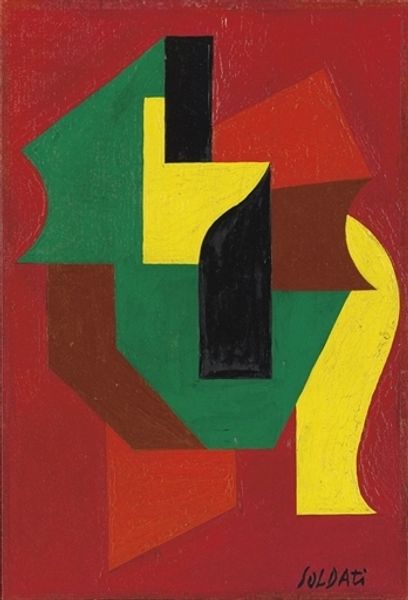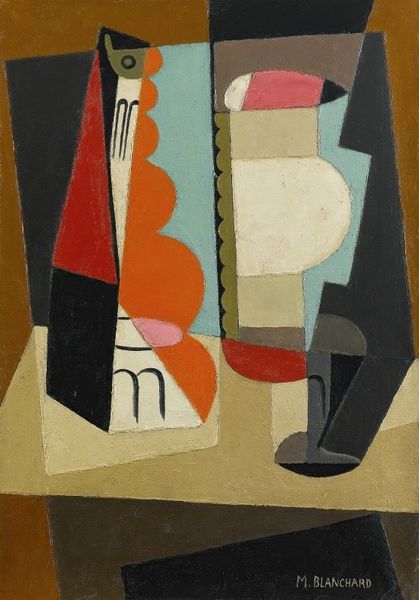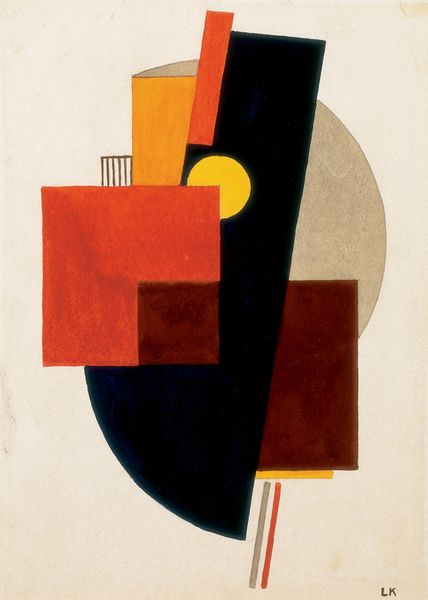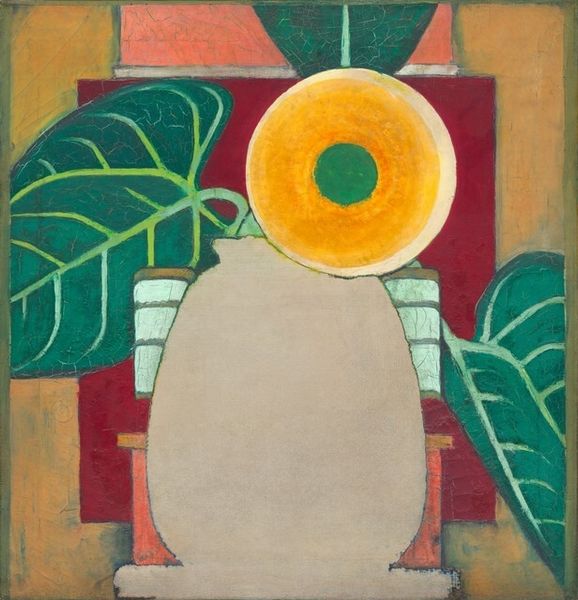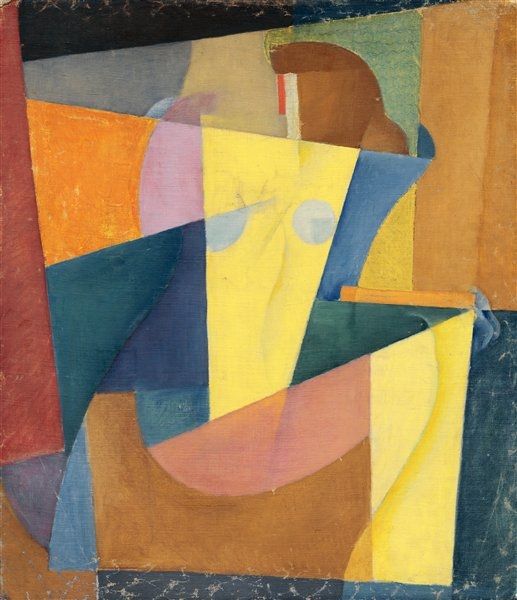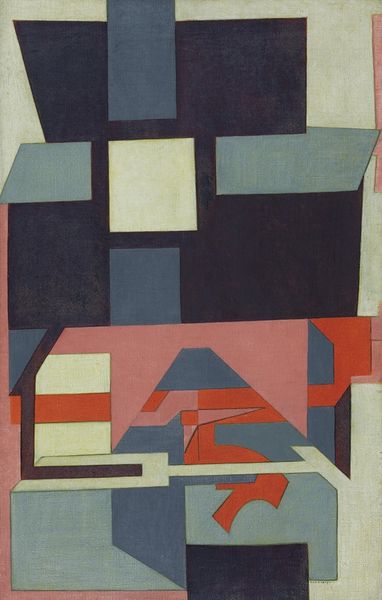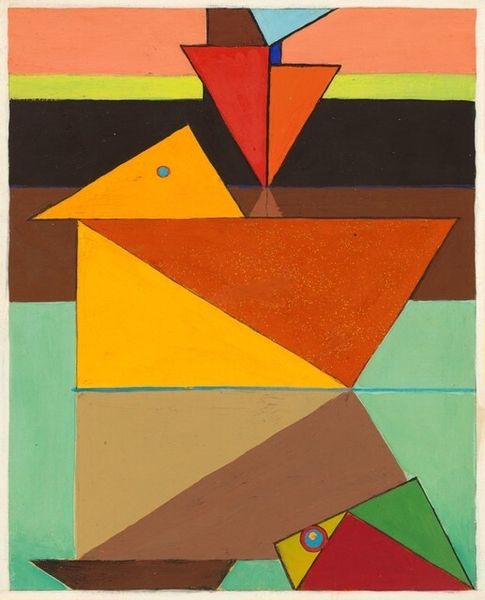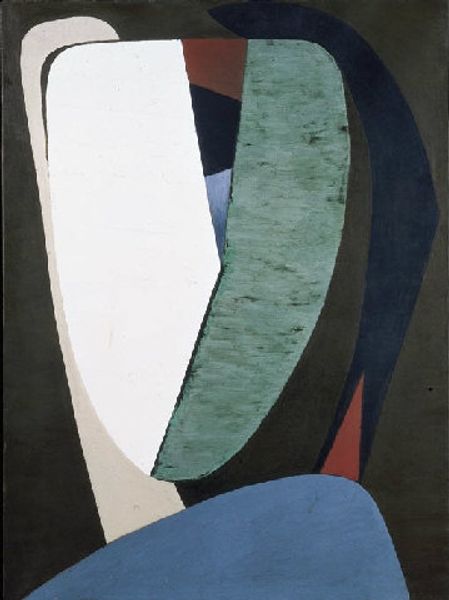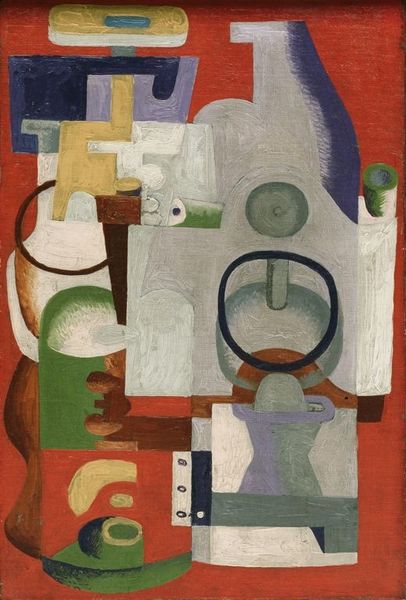
drawing, painting
#
drawing
#
cubism
#
painting
#
geometric
#
abstraction
#
modernism
Dimensions: sheet: 25.72 x 23.18 cm (10 1/8 x 9 1/8 in.)
Copyright: National Gallery of Art: CC0 1.0
Curator: Stepping into this room feels like stumbling into a geometric daydream, doesn’t it? This is “Rabbit (Le Tournesol)” by Edward Steichen, estimated to be from around 1920. A curious collision of representation and…well, what would you call it? Controlled chaos? Editor: Chaos, but with intent! My first thought was how unapologetically bold it is. The vibrant, flat planes of color—reds, yellows, greens—push and pull against each other, and the hard edges create these powerful oppositions and juxtapositions that refuse any attempt at conventional harmony. Curator: Harmony? Please, darling, who needs it? What I love is that while clearly influenced by Cubism, it still maintains a sense of playfulness. The title itself is almost a wink—is it a rabbit? Is it a sunflower? Probably both, and neither. I find that ambiguity liberating. It gives me permission to see the world differently. Editor: Absolutely, but this isn't just whimsy. By abstracting these forms, Steichen encourages us to look past superficial representation. The choice to blend these identities together reflects an exploration of multiplicity. It rejects simple categorizations and opens up avenues to understanding multifaceted identities. What does it mean to occupy a fluid space that doesn’t subscribe to strict boundaries? Curator: That's what great art does, right? Makes us question everything, even our own perceptions. Though sometimes I do wonder if he got lost in all the geometry. The execution feels a little stiff, as if the freedom of the idea didn't quite translate to the canvas. Editor: Perhaps that stiffness is intentional! Remember the era; this work arises from the aftermath of WWI, and this sense of fragmentation and distortion can be understood as an articulation of cultural trauma. These disrupted forms mirrored the disruption felt within society itself. Curator: So, in its own peculiar way, a painting about rabbits and sunflowers actually shows an emotional landscape? Incredible! Suddenly I feel quite sentimental for the squares and circles of the roaring '20s! Editor: Precisely! When we look at art as an invitation to examine its layers of meanings, the dialogue becomes transformative.
Comments
No comments
Be the first to comment and join the conversation on the ultimate creative platform.


